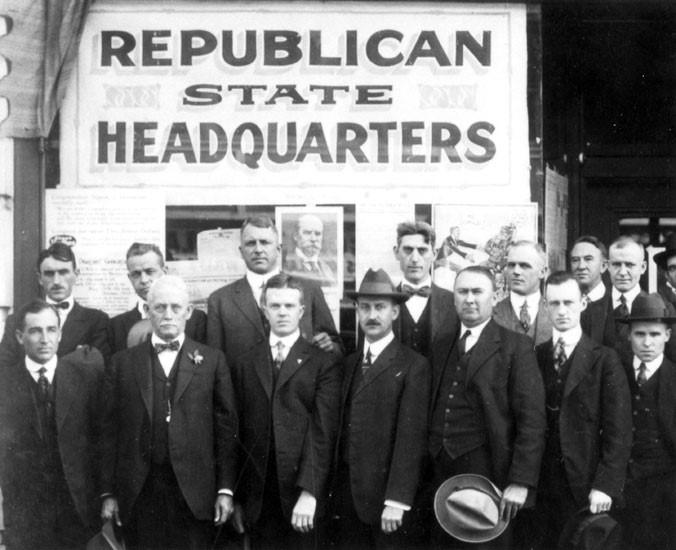A New Office, A New Research Outlook – My Summer at PPIC
A New Office, A New Research Outlook – My Summer at PPIC
As I looked at the impressive silver lettering adorning the lobby entrance to The Public Policy Institute of California (PPIC), I had to check my Google maps on my phone to see if I was actually in the right office. I calmly convinced myself that this couldn’t possibly be where the interns work. There had to be a catch here, or some dark basement where they could stick us with dusty monitors and mildly unreliable phone lines.
This may seem like a strange mental routine/initial reaction to the beautiful sunlit offices of PPIC in the heart of historic San Francisco financial district, but please understand… I’m a veteran intern of city government offices and I’m much more familiar with the feeling of working in historically significant, yet painfully dated, and somewhat dilapidated buildings.
Stepping into the pristine, sustainable, and cutting edge offices of PPIC was a metaphor for the rest of my experience there this past summer. Five other graduate interns and I received funding from The Riordan Foundation to conduct research on timely California education, corrections and health challenges. And just to give you a little background on PPIC, it’s an independent, non-partisan, and non-profit research foundation. In 1993, several Silicon Valley tech titans recognized California’s quickly changing political and social landscape, as well as the void in the state’s legislative research budget. They collectively endowed PPIC to produce objective, academic and legislative research to inform policy makers. The non-profit currently focuses on health and human services, education reform, water and energy challenges, and corrections spending and reform; with their objectives and research teams constantly shifting to service the most immediate needs of policy makers and state citizens.
I had the pleasure of being assigned to the PPIC corrections team where I was exploring the state of pretrial programming throughout the nation. Essentially, my research quest boiled down to whether or not pretrial release for non-violent defendants should be considered as one of many solutions to help alleviate the costs and effects of AB 109 – The Public Safety and Realignment Act? I was given access to a comprehensive national urban felony defendant dataset, but more importantly I was given access to pursue an open-ended research question with all of PPIC’s resources under the direction of an incredible research staff.
As AB 109 moves through its implementation process more than 33% of state prisoners have already been moved to county jails or released and over $1 billion of funding will be allocated to county jails by the end of 2014 to pay for additional inmates and reduce recidivism over time. In an effort to spend these funds prudently and efficiently, best practices on recidivism, pretrial release and pretrial spending must be established, broadcasted and implemented across counties. PPIC had the foresight to recognize this challenge and begin pounding the pavement to establish these answers in a timely format.
My end of summer research presentation highlighted the effective use of pretrial programming and the release of non-violent defendants under their own supervision or “recognizance” in more than 10 CA counties. I found that defendants who hadn’t been arrested for violent crimes were highly unlikely to commit violent crimes while on release prior to trial, and also highly unlikely to flee, or fail to appear for relevant court dates. Similarly, those defendants with children, family and jobs rarely committed any type of misconduct, much less violent crime while on release before trial. In addition, it was abundantly clear from the data that the pretrial programs that reminded defendants to show up for their court dates a few days prior reduced fail to appear rates significantly and that small inexpensive administrative measures could save counties millions of dollars annually.

The author (Price student Caroline Stevens), US Secretary of Education Arne Duncan, Price Student Alexander Becker
I’m currently still working to cram all of these trends and facts into one comprehensive research paper that will establish the effective use of implementation of pretrial programming in all California counties however, that outcome would be far from the most important product PPIC offered me this summer. PPIC provided me with a new framework for policy information, data delivery and fact finding. In the world of economics and policy it is often pounded into us that we cannot have perfect information when making decisions, but my experience this summer watching the rigorous and intense research process at PPIC reinforces the idea that we certainly can try to approach that imaginary “perfect knowledge threshold.”
 Upon stepping out of the impressive PPIC lobby and into my sun drenched office I entered a realm where Arne Duncan, US Secretary of Education, came to speak personally about his policy plans for the future, weekly research brown bag talks with the widely quoted experts filled my calendar, and daily discourse among my brilliant fellow interns from Stanford, Berkeley and SF State bounced off the walls of my office and on to my very dust free monitor screen. While I’m exceptionally ecstatic that PPIC decided not to shove the interns in a dusty backroom basement, the experience would have been still worth it if they had – I don’t think any other experience could have provided me with such an energy for research, a thirst for fact finding and a desire to produce really brilliant policy experiments and reports to improve state policy design over time. This year I hope to continue that outlook through both my coursework and my work here at the Bedrosian Center.
Upon stepping out of the impressive PPIC lobby and into my sun drenched office I entered a realm where Arne Duncan, US Secretary of Education, came to speak personally about his policy plans for the future, weekly research brown bag talks with the widely quoted experts filled my calendar, and daily discourse among my brilliant fellow interns from Stanford, Berkeley and SF State bounced off the walls of my office and on to my very dust free monitor screen. While I’m exceptionally ecstatic that PPIC decided not to shove the interns in a dusty backroom basement, the experience would have been still worth it if they had – I don’t think any other experience could have provided me with such an energy for research, a thirst for fact finding and a desire to produce really brilliant policy experiments and reports to improve state policy design over time. This year I hope to continue that outlook through both my coursework and my work here at the Bedrosian Center.



